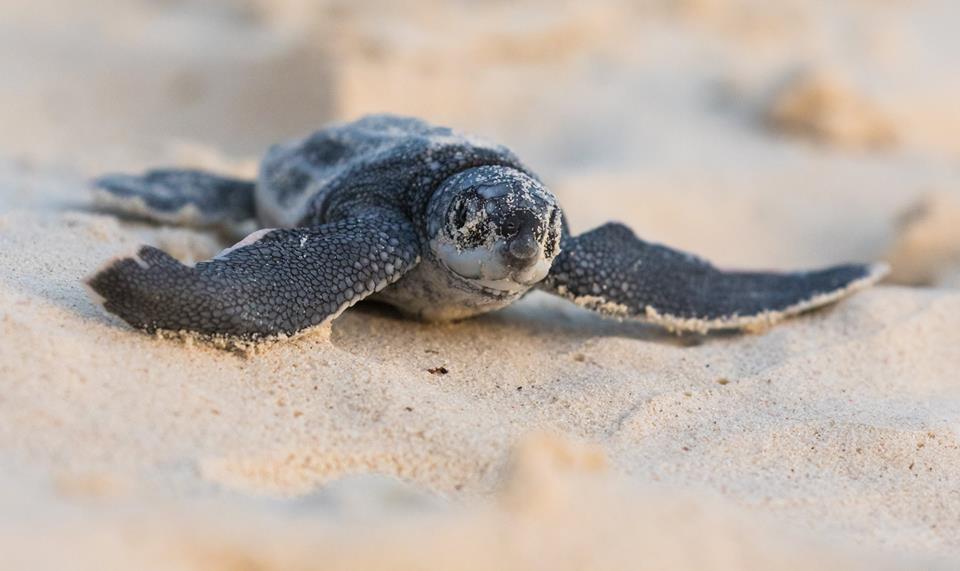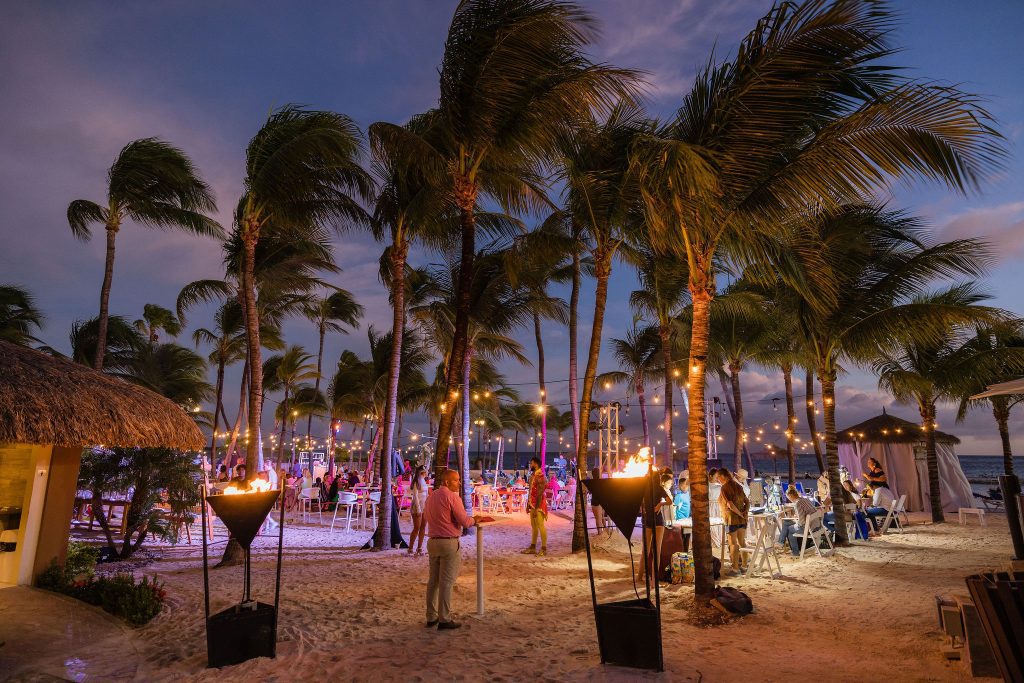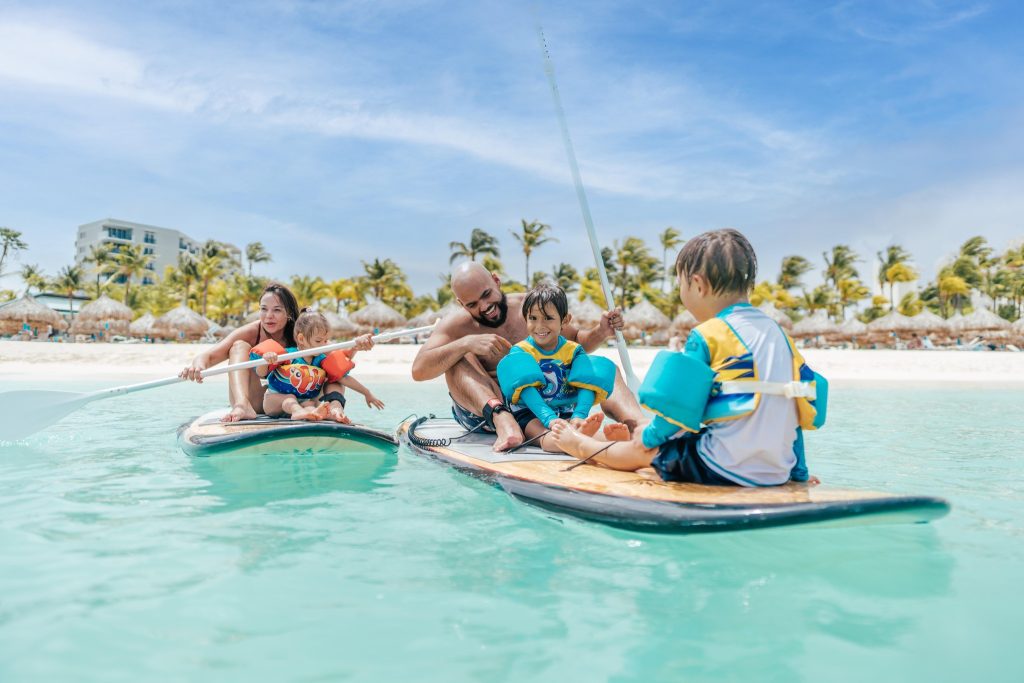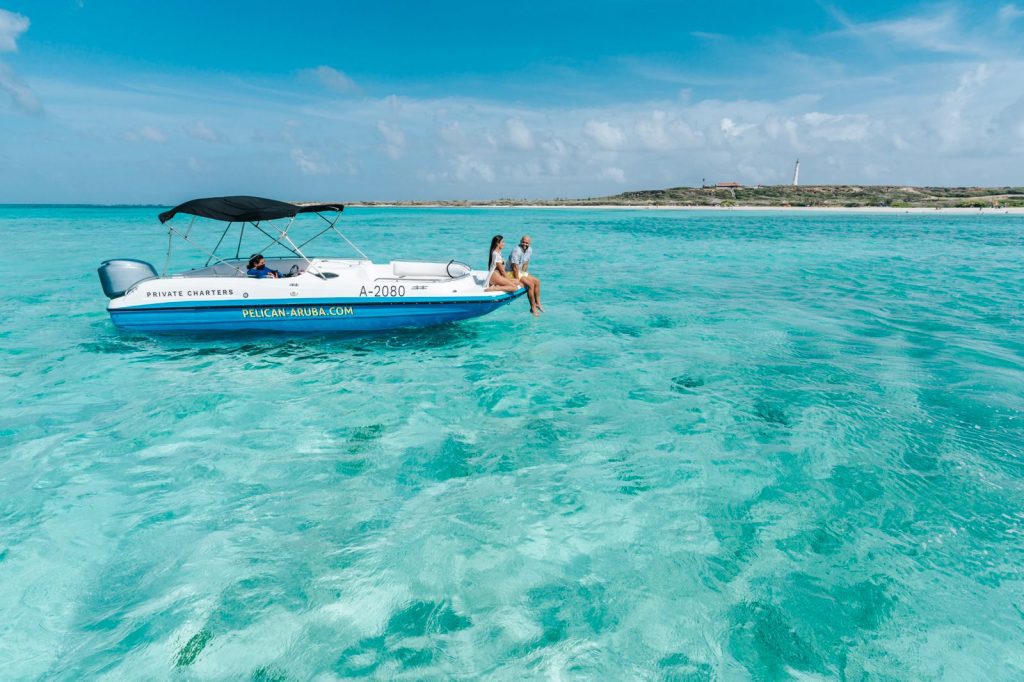Long before Aruba’s first human visitors arrived, the island welcomed another group of intrepid tourists: sea turtles. These majestic creatures are among a very select group of animals that have roamed the Earth since the Jurassic Period – about 150 million years ago! Along with bees, crocodiles, and cockroaches, sea turtles survived several mass extinction events, including the cataclysmic event that killed off all the dinosaurs.
There are seven types of sea turtles; Leatherback, Loggerhead, Hawksbill, Green, Kemp’s Ridley, Olive Ridley, and Flatbacks. Aside from the Flatback turtles, which stay relatively close to Australia, sea turtles roam all the world’s oceans – except for the frosty water of the Arctic. The Caribbean is a hotbed of activity for these ancient mariners – even sea turtles know that everything’s better on white-sand beaches, surrounded by an azure sea.
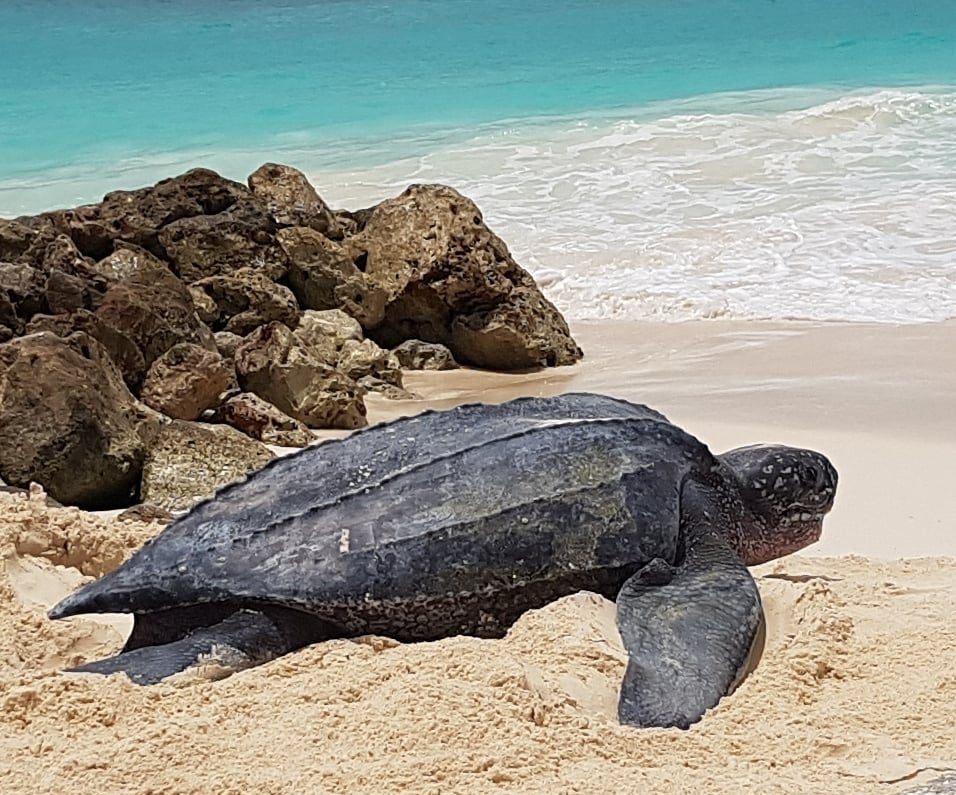
Aruba plays host to four species of sea turtles: Loggerheads, Leatherbacks, Hawksbills, and Green Turtles. During nesting season, between March and September, female turtles return to the same beach where they were born, to lay their eggs. Usually, these nesting events occur at night but, a few years ago, a gorgeous Leatherback turtle made quite a sensation near the shores of Bucuti & Tara Beach Resort by laying her eggs at sunset. Check out her triumphant return to the sea here.
Nesting season is in full swing on the island right now so we’d like to take you on an envisioned journey with a Leatherback turtle – from nest to nesting. You’ll have to come back in time with us to the year 2005.
Important: If you are ever to come across sea turtle tracks or nests on the beach, please keep your distance and contact the Turtugaruba Foundation, so that they can be properly protected and monitored.
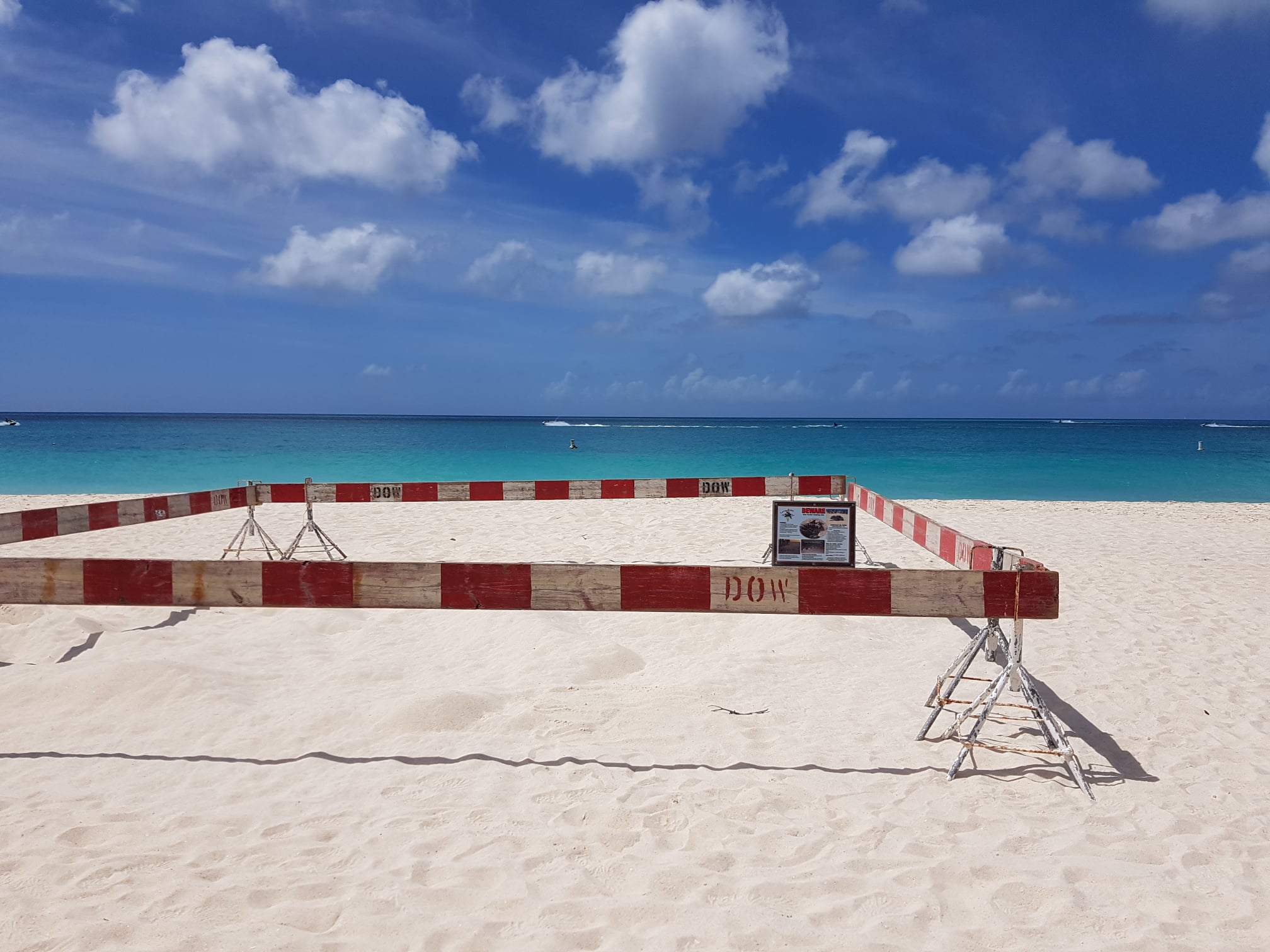
Ahhh…2005. It was a simpler time. YouTube was in its infancy, Blackberries were King of the Smartphones and Mariah Carey’s ‘We Belong Together’ was the song you couldn’t escape (no matter how hard you tried). The heroine of our story, Lara Leatherback, has just broken free of her shell and is beginning the laborious process of digging her way out of her nest.
Unlike most creatures, Lara’s sex wasn’t predetermined by chromosomes, but rather by the temperature of the sand surrounding her egg. Eggs that nest in sand above 82 degrees Fahrenheit (about 28 degrees Celsius) develop into females, while eggs nesting in cooler sand become males. The eggs at the top of the nest, closer to Aruba’s warm sunshine, will be female, while the eggs in the cooler bottom of the nest become male.
Lara doesn’t care about any of that. Alongside her newly hatched siblings, she’s only got one goal: she hears the siren song of the sea and knows that she has to get in the water as soon as she possibly can – her very life depends on it. The trek she’ll take from the safety of her nest to the water is full of peril. Lara only weighs about half a pound – the perfect, fun-sized snack for predators such as dogs and sea birds. Lara has no attachments to any of her kin – she’ll never meet her mother and her brothers and sisters are similarly focused on getting to the relative safety of the sea. From the moment of birth, it’s every turtle for itself. However, Lara has formed one significant attachment – to Aruba.
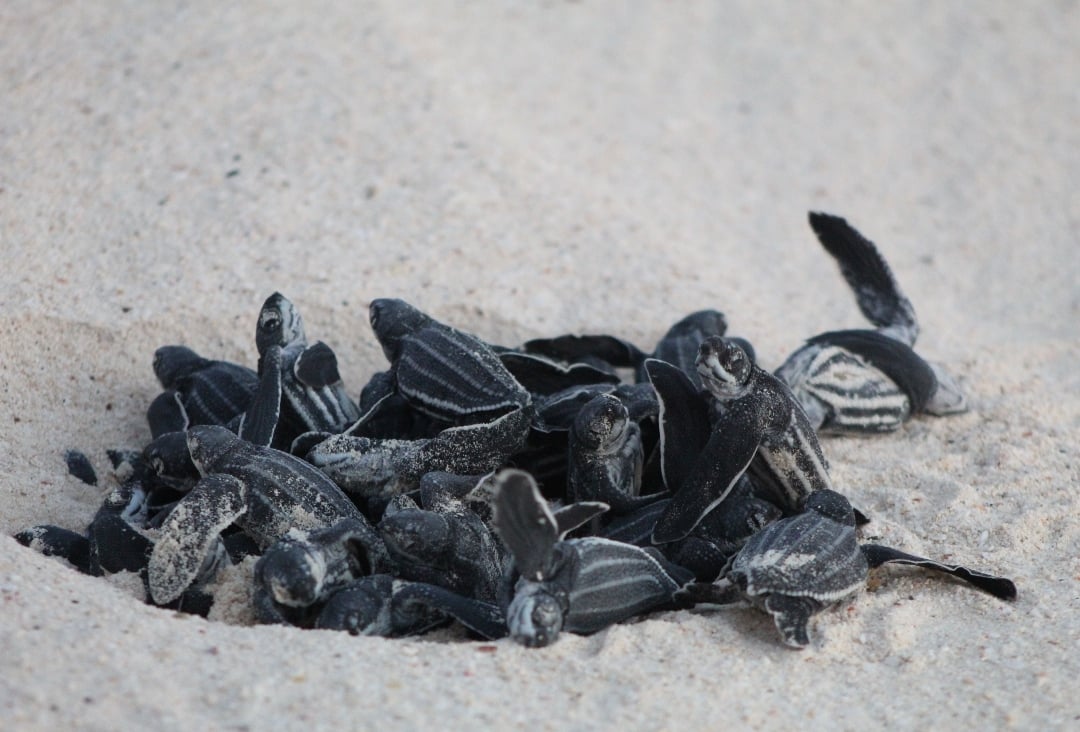
Sea Turtles have remarkable geomagnetic abilities. Using the Earth’s magnetic field like a personal GPS system, Lara will be able to find her way back to Aruba, no matter how far away she roams. Using her tiny flippers to dig her way to the surface, Lara takes a moment to orient herself, and then the race is on! On land, she’s gangly and a bit awkward – flippers don’t make great feet, but our tiny hero scrambles along the sand, to the ocean, as fast as turtley possible.
Once in the water, Lara is in her element, but the dangers she faces are far from over. The sea is also filled with creatures that would gladly eat her if they could, but safety isn’t Lara’s primary concern. She burned up all her energy getting to the water and now she needs to find something to eat. While feasting on an assortment of jellyfish, seagrass, fish eggs, mollusks, and crustaceans, Lara begins a pattern of migration that will take her all over the Atlantic Ocean.
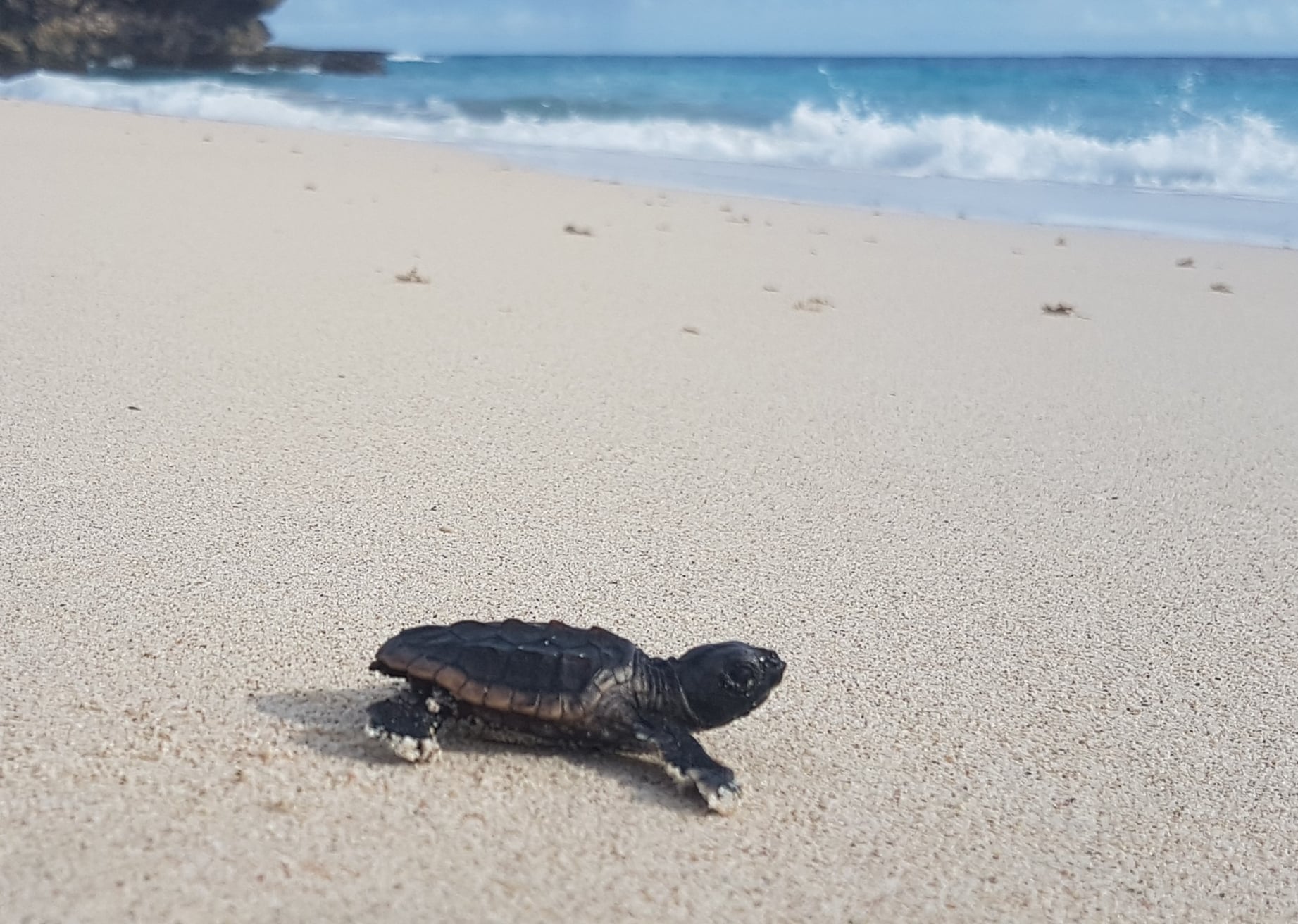
She’ll spend the next 15 years, steadily eating and rapidly growing – possibly up to 8 feet long and weighing 2,000 lbs.
Another thing that Lara doesn’t know is that 2005 wasn’t a great year to be born a turtle. Since the industrial revolution, human beings have been reshaping the Earth to better suit our needs – without much thought of the creatures that share our land. Lara and her fellow sea turtles are all currently listed as endangered creatures. Marine pollution, plastic bags that look like delicious jellyfish, commercial fishing nets, global heating, and poaching practices are just a few of man’s practices that have helped land Lara on the endangered species list. While ecologists and marine biologists have long known about the dangers sea turtles face, the non-scientific community has only recently opened its collective eyes to the plight of our four flippered friends.
In 2015, this distressing video went viral. We warn you, it’s not easy to watch. In the video, a marine biologist is removing a plastic straw from a turtle’s nose. Other viral images show turtles with misshapen shells because they got stuck inside plastic six-pack beverage rings and the intestinal tracts of turtles that were completely blocked with single-use plastic. The odds of a sea turtle reaching maturity are obscenely stacked against them. Luckily, our fair Lara has great instincts. She spends the next 16 years happily swimming, eating, and growing. As she grows bigger, so do her chances of evading natural predators.
Lara’s migratory pattern isn’t set in stone – it’s heavily influenced by environmental factors, but you can rest assured that she’s seen at least as much of the ocean as famous, French, maritime explorer Jacques Cousteau. She can’t breathe in the water, but she can hold her breath underwater for up to 7 hours while at rest. She can also dive as deep as a submarine and swim about 22 miles (35 kilometers) per hour.
Now that Lara’s reached sexual maturity, her internal GPS leads her back to Aruba for the first time since she left its sunny shores. She’s big, beautiful and ready to sow some wild oats. Her life, to this point, has been a solitary one, but during mating season she’s ready to mingle. Once her eggs are fertilized, Lara makes her way back to the beach where she was born, digs a hole (called a clutch) that’s about 2.5 feet (75 cm.) deep, and lays 110 eggs (give or take). She’ll repeat this process several times during that nesting season before returning to the cooler waters of the Atlantic until she’s ready to mate again. 60 days after being laid, Lara’s babies will hatch and begin the cycle again.
Turtugaruba is a nonprofit organization that’s committed to protecting Aruba’s turtles. They block off nesting sites, help guide baby turtles to the ocean, if need be, and raise awareness of how humans can be better Earthmates to our marine reptile friends. Their stunning website will tell you everything you want to know about Aruba’s sea turtles and has great tips on ways you can become a better turtle friend. It’s never ok to manhandle your turtle buddies but if you want a chance to swim among them at a safe distance, check out these great snorkeling options in Aruba, where you might spot one if you’re lucky. Try the Turtles and Seabob Aruba Tour!
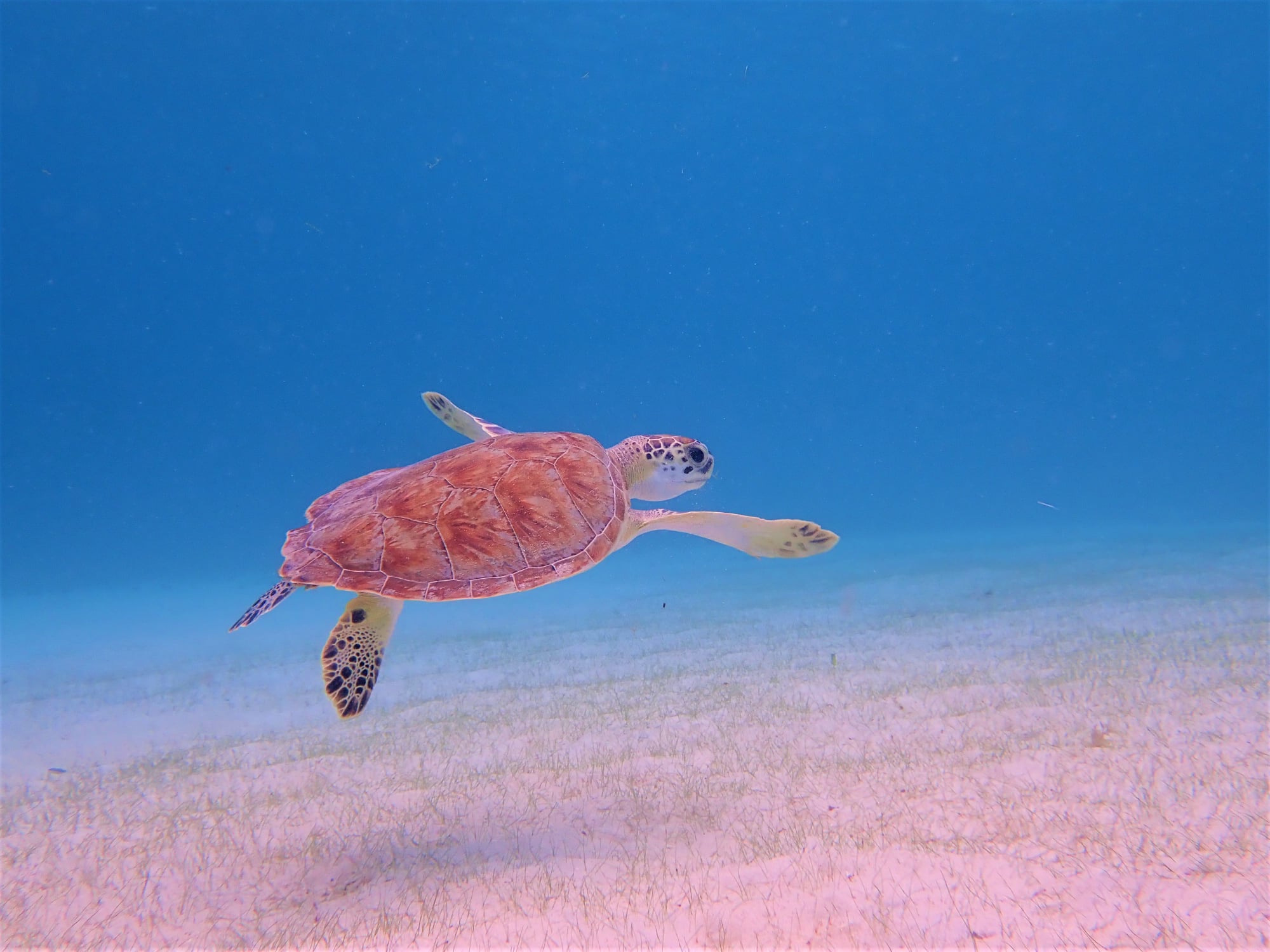
This Earth Day, spare a thought for the world’s sea turtles. They need our help to survive, now more than ever, or else, like the dinosaurs, they might soon become nothing more than a memory in a museum. Do you really want to live in a world without this guy?
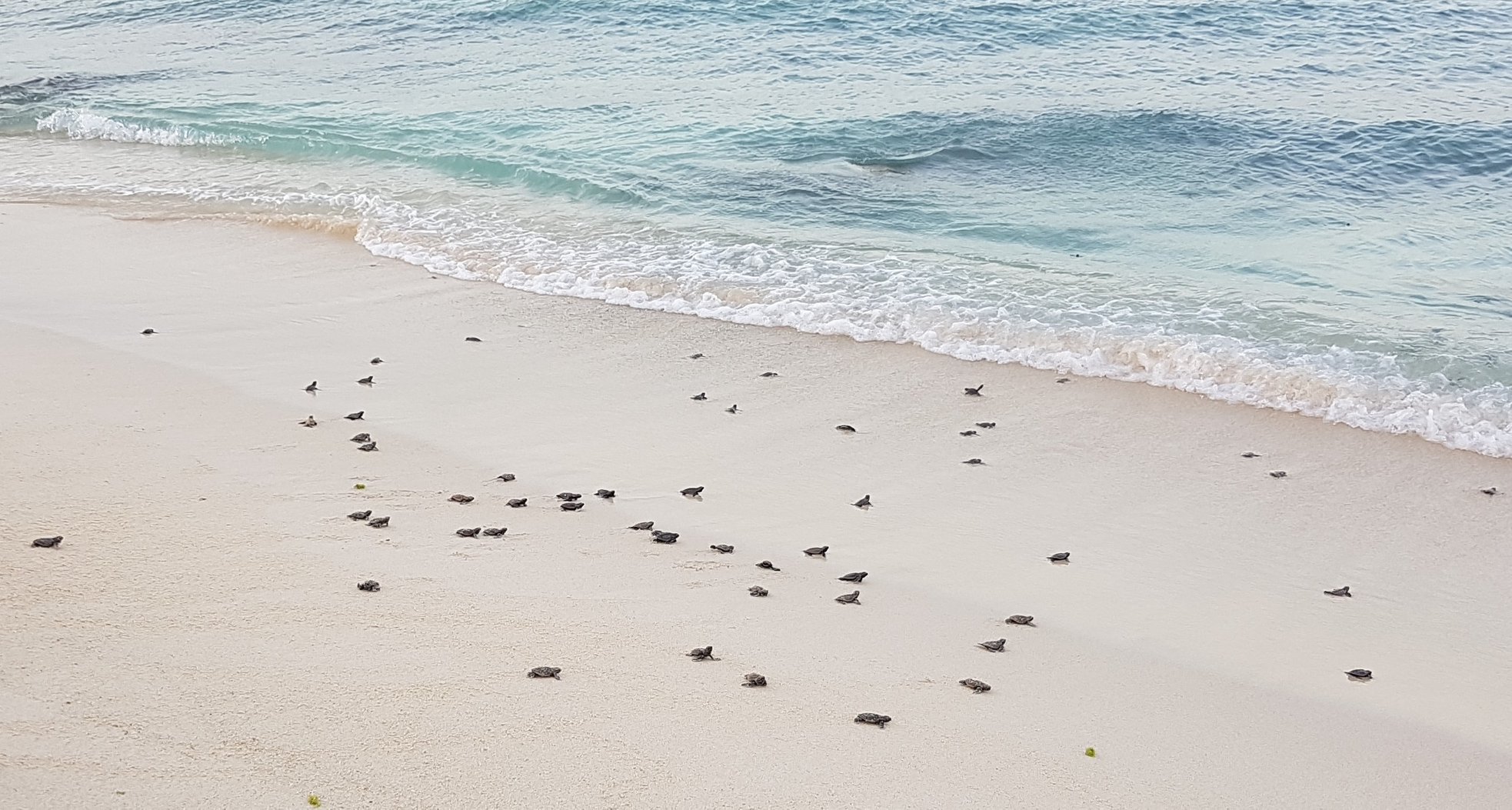
Main featured photo by Artmando Multimedia


